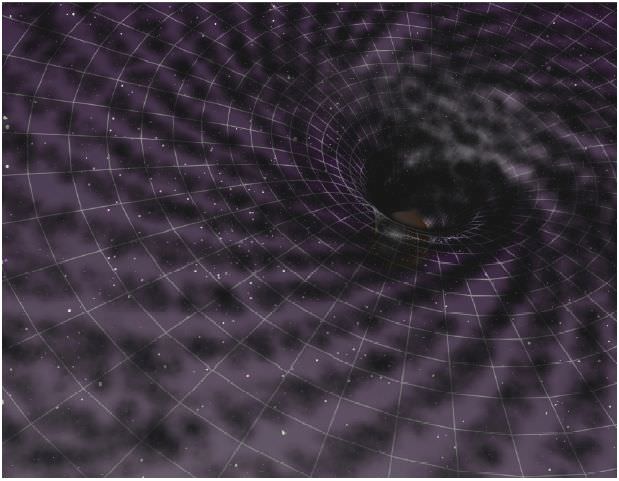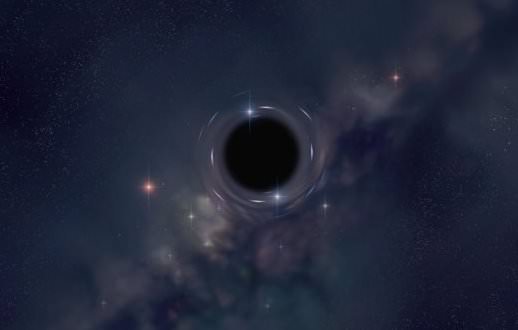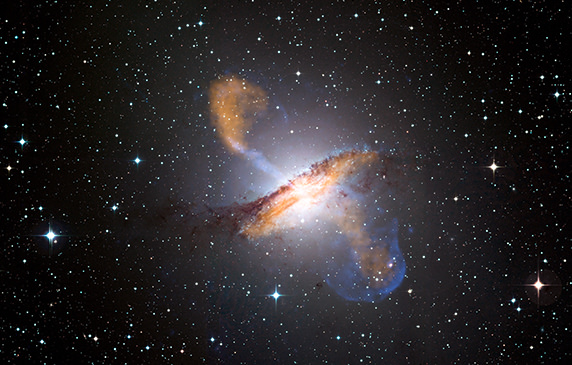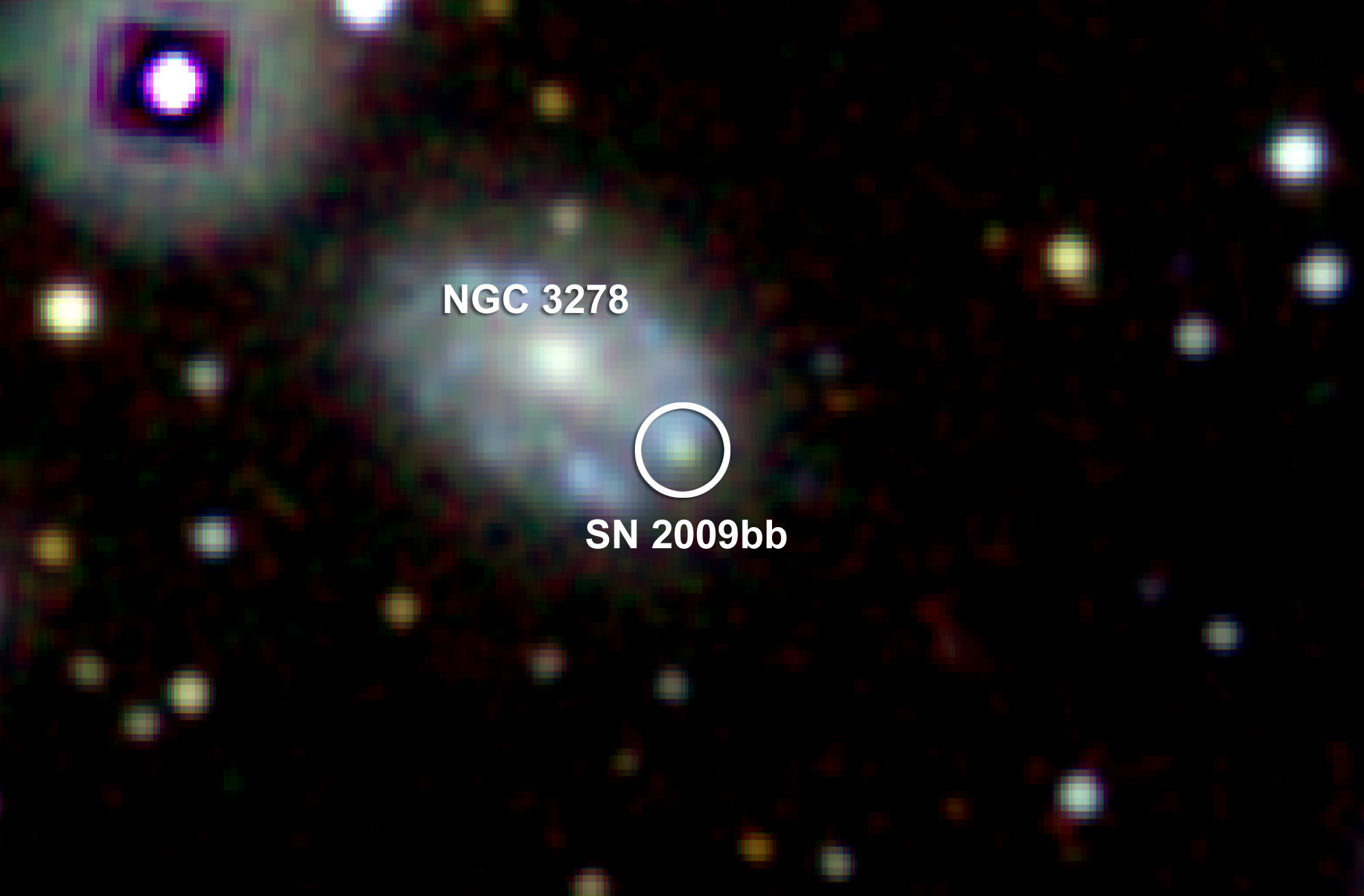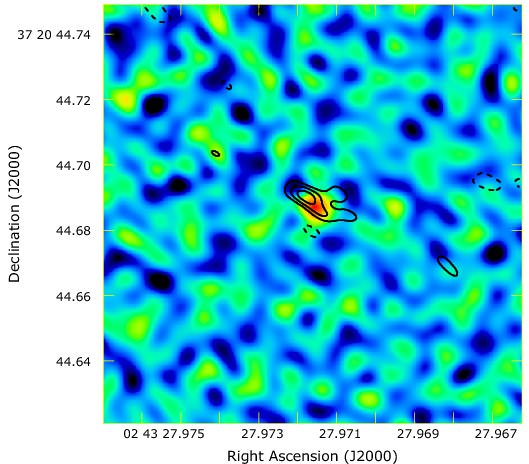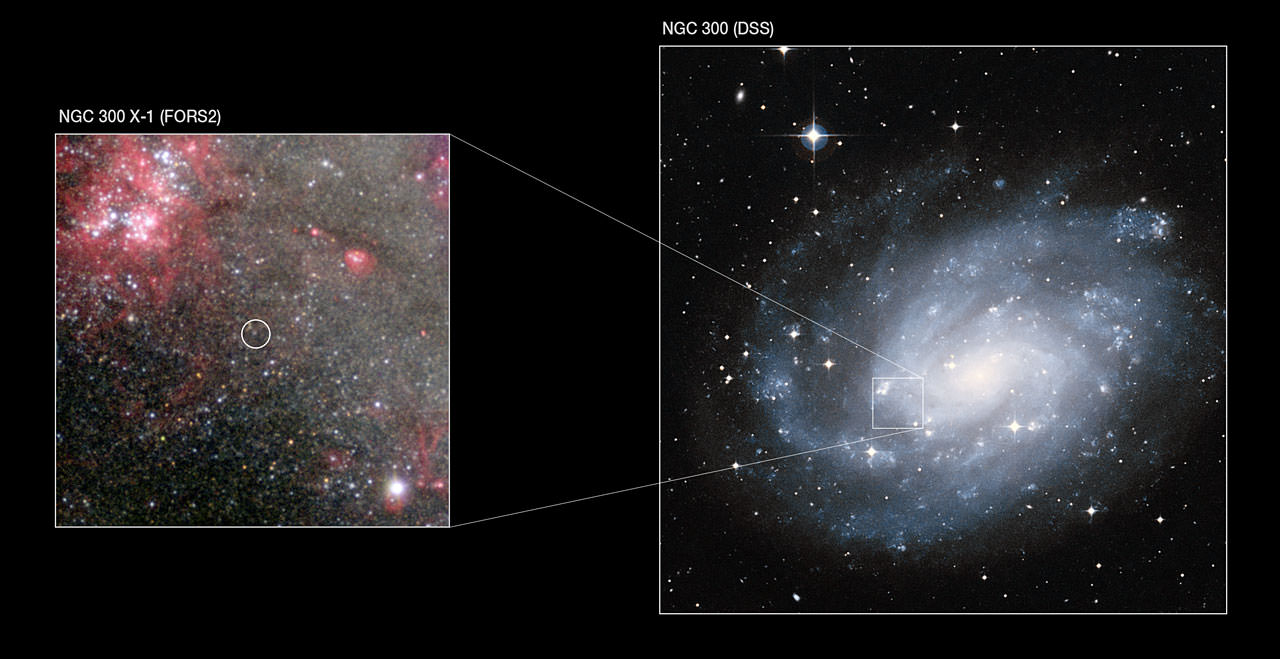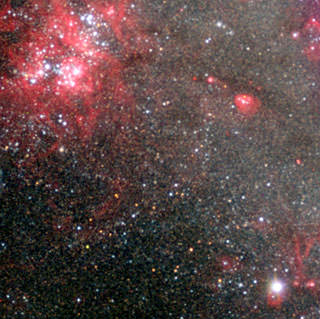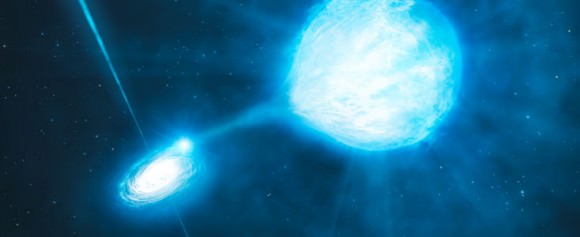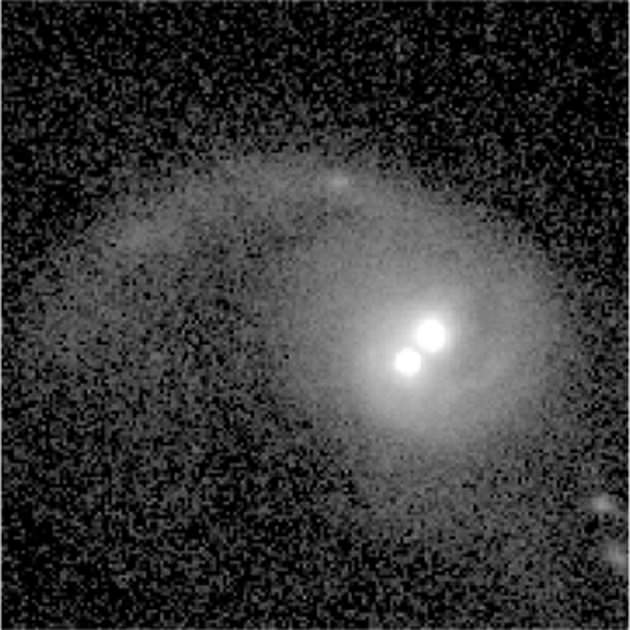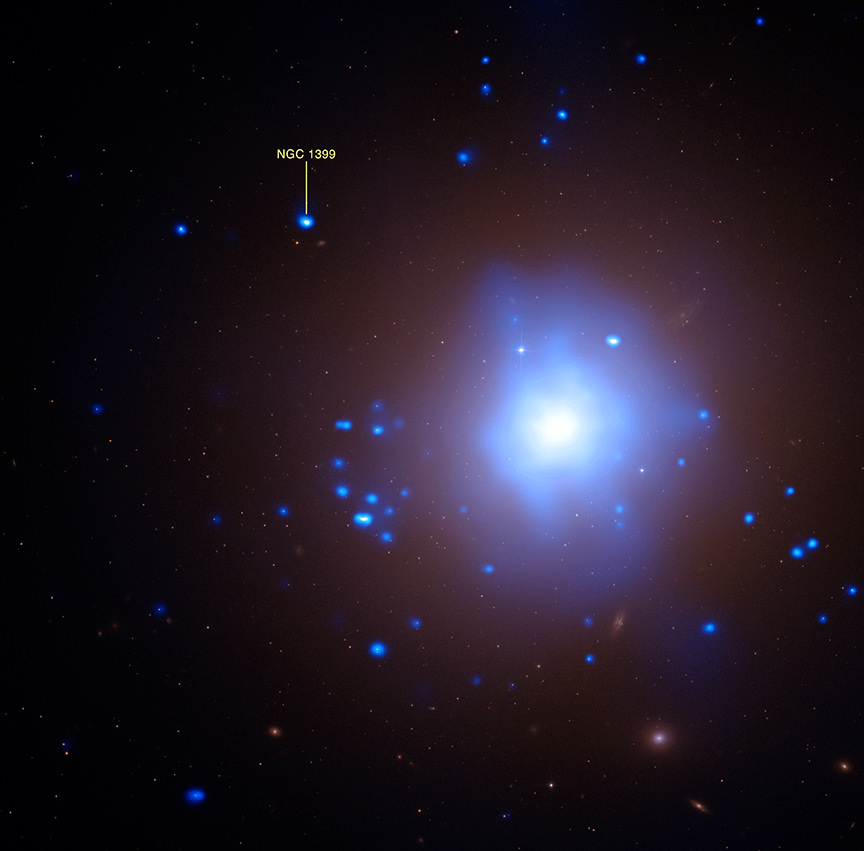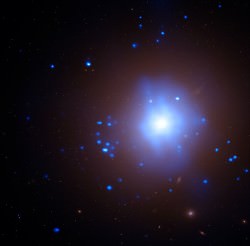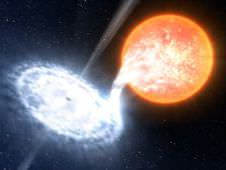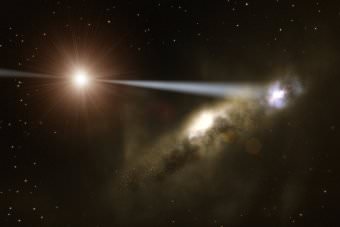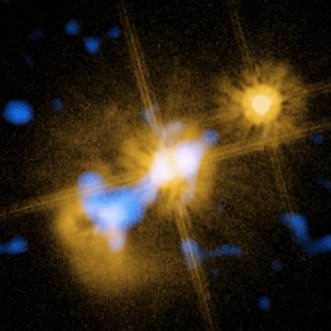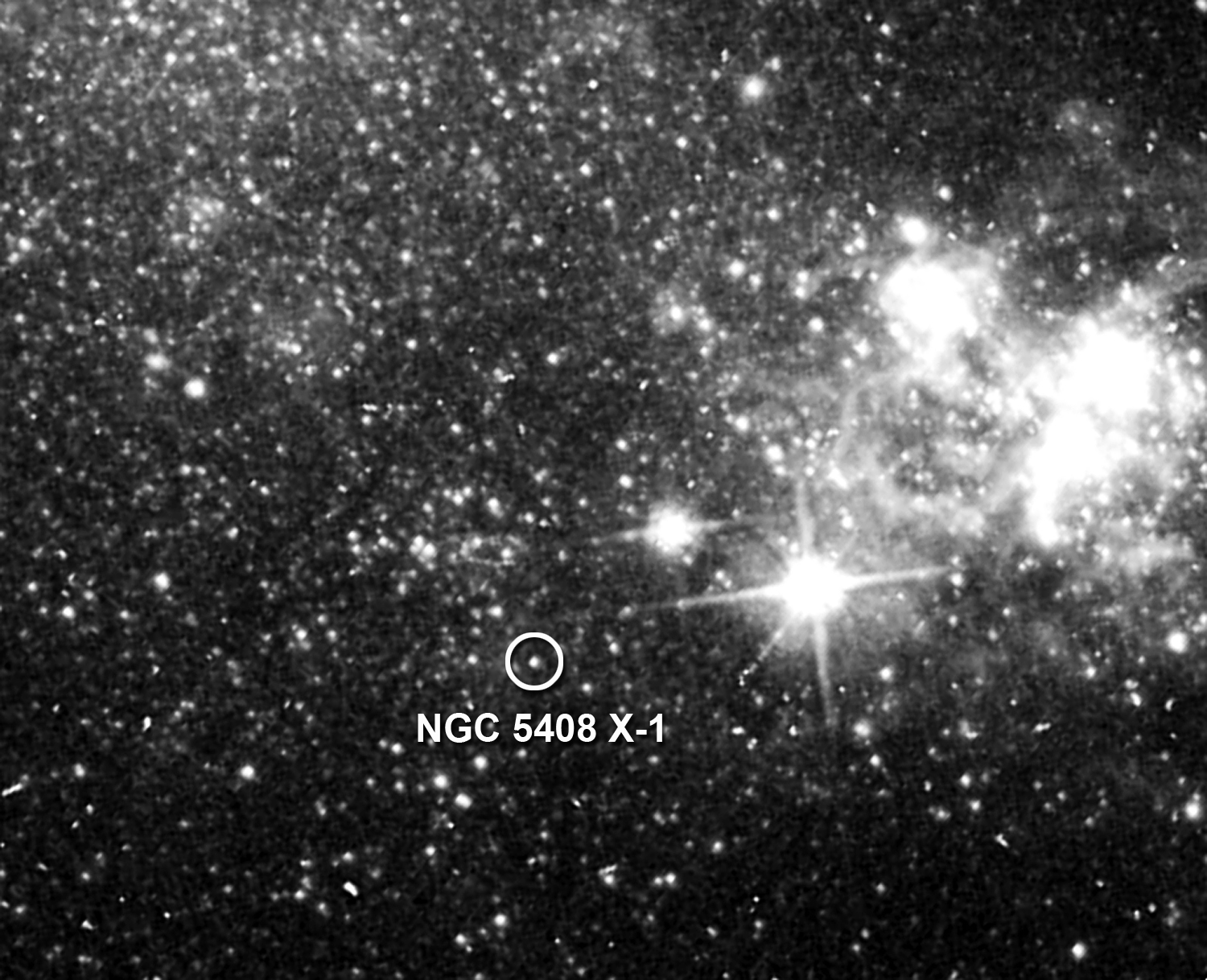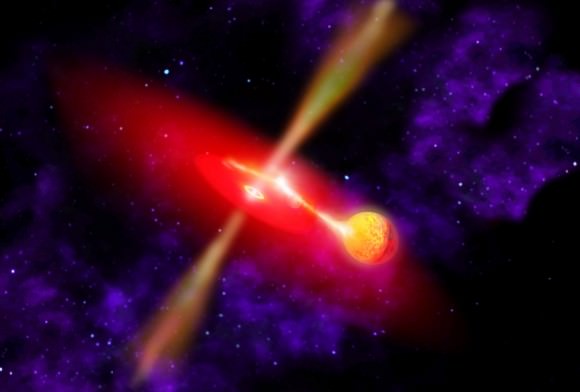[/caption]
There’s the common notion that black holes suck in everything in the nearby vicinity by exerting a strong gravitational influence on the matter, energy, and space surrounding them. But astronomers have found that the dark matter around black holes might be a different story. Somehow dark matter resists ‘assimilation’ into a black hole.
About 23% of the Universe is made up of mysterious dark matter, invisible material only detected through its gravitational influence on its surroundings. In the early Universe clumps of dark matter are thought to have attracted gas, which then coalesced into stars that eventually assembled the galaxies we see today. In their efforts to understand galaxy formation and evolution, astronomers have spent a good deal of time attempting to simulate the build up of dark matter in these objects.
Dr. Xavier Hernandez and Dr. William Lee from the National Autonomous University of Mexico (UNAM) calculated the way in which the black holes found at the center of galaxies absorb dark matter. These black holes have anything between millions and billions of times the mass of the Sun and draw in material at a high rate.
The researchers modeled the way in which the dark matter is absorbed by black holes and found that the rate at which this happens is very sensitive to the amount of dark matter found in the black holes’ vicinity. If this concentration were larger than a critical density of 7 Suns of matter spread over each cubic light year of space, the black hole mass would increase so rapidly, hence engulfing such large amounts of dark matter, that soon the entire galaxy would be altered beyond recognition.
“Over the billions of years since galaxies formed, such runaway absorption of dark matter in black holes would have altered the population of galaxies away from what we actually observe,” said Hernandez
Their work therefore suggests that the density of dark matter in the centers of galaxies tends to be a constant value. By comparing their observations to what current models of the evolution of the Universe predict, Hernandez and Lee conclude that it is probably necessary to change some of the assumptions that underpin these models – dark matter may not behave in the way scientists thought it did.
There work appears in the journal Monthly Notices of the Royal Astronomical Society.

